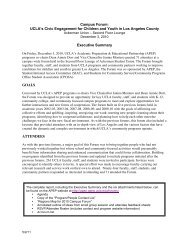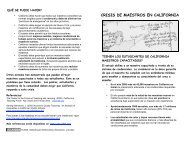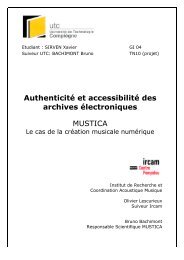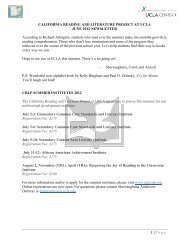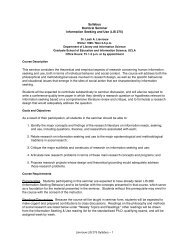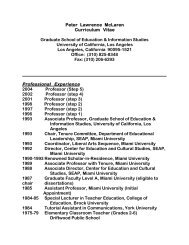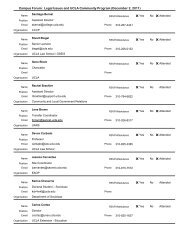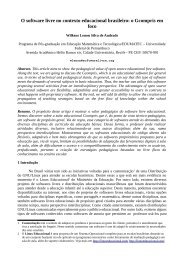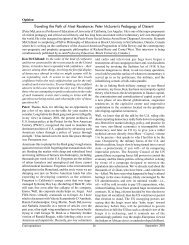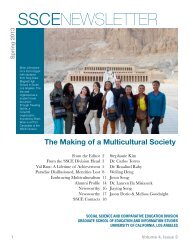1.1 From Digital Humanities to Speculative Computing - UCLA ...
1.1 From Digital Humanities to Speculative Computing - UCLA ...
1.1 From Digital Humanities to Speculative Computing - UCLA ...
Create successful ePaper yourself
Turn your PDF publications into a flip-book with our unique Google optimized e-Paper software.
quantum method cited above, and integrate it here, the intervention determines the text.<br />
The act of reading calls a text (specific, situated, unique) in<strong>to</strong> being.<br />
4. Induction/Abduction: Under such circumstances, scientific techniques of<br />
induction and deduction don’t work. They are structured and structural, assuming self-<br />
identicality in themselves and for their objects, an inscribe relations of causality and<br />
hierarchy. By contrast, methods of comparative abduction, taken from Charles Peirce, do<br />
not presume that a logical system of causal relations exists outside the phenomenon and<br />
supplies an explanation for their relations. Configured relations simply (though this is far<br />
from simple) produce semantic and syntactically structured effect independent of<br />
grammatical systems. The contingently configured condition of form–a hefty phrase<br />
indeed–points <strong>to</strong> the need <strong>to</strong> think about forms as relations, rather than entities. This<br />
requires rewiring for the Anglo-analytic brain, accus<strong>to</strong>med as it is <strong>to</strong> getting hold of the<br />
essence and substance of intellectual matter. Even the mechanisms of the dialectic tend <strong>to</strong><br />
elude the empiricist sensibility, and it has the benefit of a device-driven process and<br />
hierarchy of thesis-antithesis-and resolution <strong>to</strong> a higher order synthesis. Abduction<br />
adheres <strong>to</strong> no single set of analytic procedures. Every circumstance produces its own<br />
logic as description, rather than explanation.<br />
5. Discrete/heteroglossic: Traditional humanistic work assumes its object. A book,<br />
poem, text, image, or artifact, no matter how embedded in social production or<br />
psychoanalytic tangles, is usually assumed <strong>to</strong> have a discrete, bounded identity. Our<br />
emphasis was on the co-dependent nature of that identity. The fiction of the “discrete”<br />
object is exposed as a function of their relation <strong>to</strong> a larger discourse field. In this<br />
conception, a book is a sort of snapshot, an instantiation, a slice through the production<br />
<strong>1.1</strong> His<strong>to</strong>ry / 3/2008 /<br />
55





